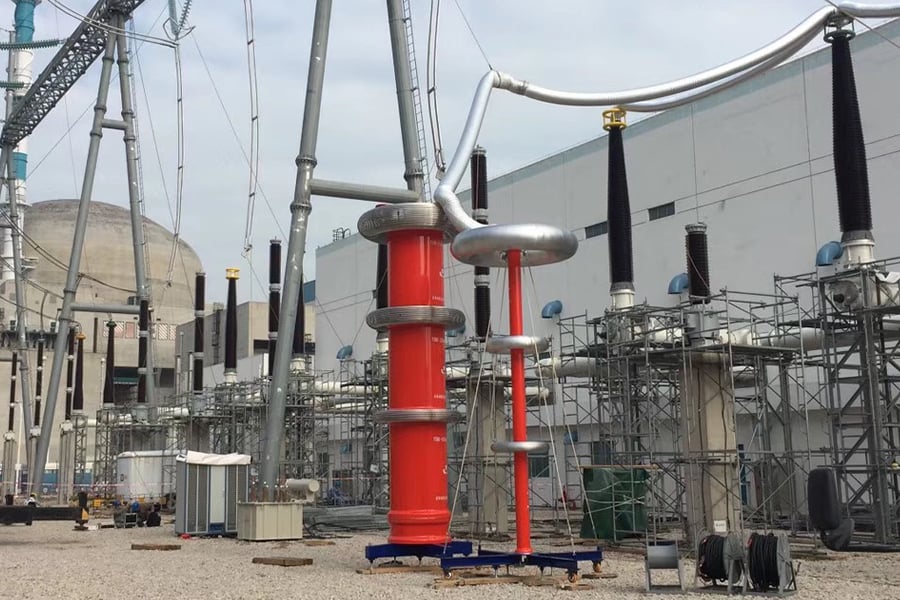AC Resonant Test Systems: A Comprehensive Guide
AC Resonant Test Systems are widely used in the field of electrical power equipment testing. These systems offer a reliable and efficient method to assess the performance and reliability of various electrical devices, such as power transformers, cables, and reactors. In this article, we will explore the different aspects of AC Resonant Test Systems, including their working principle, applications, advantages, and more.
1. Understanding the Working Principle
The working principle of AC Resonant Test Systems revolves around the concept of resonance. Resonance occurs when the frequency of an external AC power source matches the natural frequency of the test object. The system applies a high-voltage AC signal to the test object at the resonant frequency, allowing for efficient energy transfer and accurate testing.
2. Applications of AC Resonant Test Systems
AC Resonant Test Systems find applications in various industries, including power generation, transmission, and distribution. These systems are primarily used for testing power transformers, cables, and reactors. They help identify potential faults, assess insulation performance, and determine the overall reliability and quality of electrical equipment.
3. Advantages of AC Resonant Test Systems
AC Resonant Test Systems offer several advantages over other testing methods. Firstly, they provide a non-destructive testing approach, allowing for thorough assessment without causing damage to the equipment under test. Secondly, these systems offer precise control over the test parameters, ensuring accurate and repeatable results. Additionally, AC Resonant Test Systems are highly efficient, reducing testing time and costs.
4. Components of AC Resonant Test Systems
An AC Resonant Test System consists of several key components, including a high-voltage power source, a variable-frequency power amplifier, a resonant tank circuit, a test object, and measurement instruments. The high-voltage power source generates the AC signal, which is then amplified by the power amplifier. The resonant tank circuit is designed to resonate at the desired frequency, and the test object is connected to it for testing purposes. Measurement instruments, such as voltage and current sensors, are used to monitor and record the test parameters.
5. Types of Tests Performed
AC Resonant Test Systems can perform various types of tests, depending on the specific requirements of the equipment under test. Some common tests include power frequency voltage withstand test, induced voltage test, partial discharge measurement, capacitance and dissipation factor measurement, and frequency response analysis. These tests help assess insulation integrity, dielectric properties, and overall performance of the tested equipment.
6. Safety Considerations
When working with AC Resonant Test Systems, it is crucial to prioritize safety. High voltage levels are involved in these tests, and proper safety measures should be implemented. Personnel should be trained in electrical safety procedures and wear appropriate personal protective equipment. The test area should be secured and clearly marked, and all equipment should be properly grounded to prevent electrical accidents.
7. Maintenance and Calibration
Maintenance and calibration of AC Resonant Test Systems are essential to ensure accurate and reliable test results. Regular maintenance should include inspections, cleaning, and replacement of worn-out components. Calibration should be performed periodically to verify the accuracy of measurement instruments and overall system performance. Following manufacturer guidelines and recommendations is crucial for maintaining the system's performance and longevity.
8. Future Trends and Innovations
The field of AC Resonant Test Systems is constantly evolving, driven by advancements in technology and industry requirements. One notable trend is the integration of digital control systems and advanced software, allowing for enhanced automation, data analysis, and remote monitoring. Additionally, efforts are being made to develop more compact and portable test systems without compromising performance and safety.
9. Choosing the Right AC Resonant Test System
When selecting an AC Resonant Test System, several factors should be considered. These include the required voltage and current levels, frequency range, test object compatibility, system flexibility, and available budget. It is essential to consult with experts and manufacturers to determine the most suitable system for specific testing requirements.
10. Conclusion
AC Resonant Test Systems play a crucial role in ensuring the reliability and performance of electrical power equipment. Their non-destructive testing approach, precise control, and efficiency make them indispensable tools in the industry. By understanding the working principle, applications, advantages, and maintenance considerations, professionals can effectively utilize AC Resonant Test Systems to assess and improve the quality of electrical equipment.

